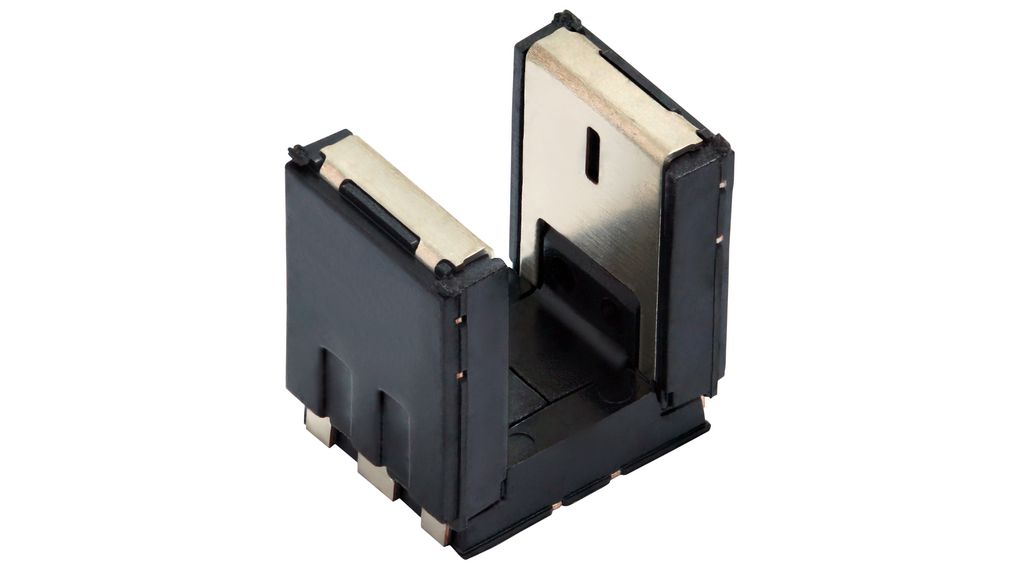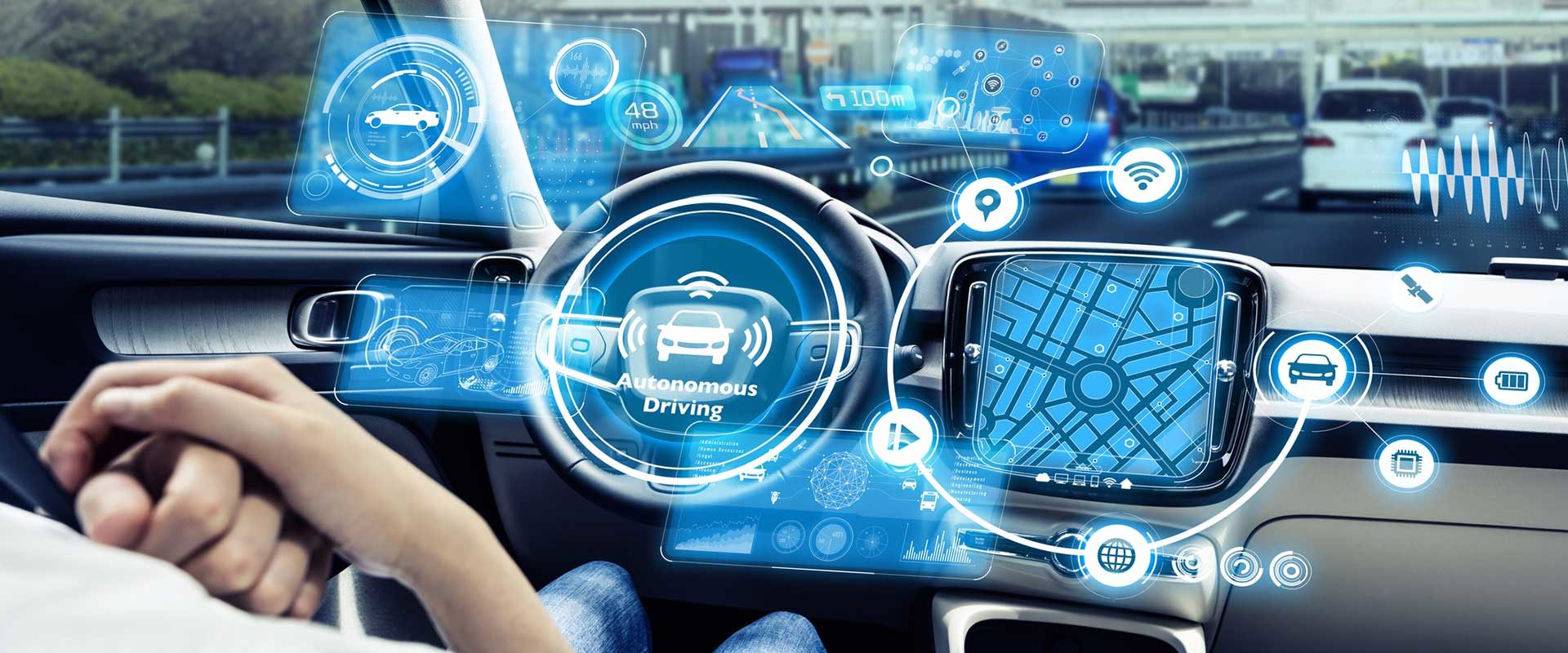Sensors are a vital part of any modern vehicle. Sensors are used to aid the driver and provide critical safety features. They are also used to speed up the maintenance of vehicles when parts fail or need regular maintenance.
Sensors are very much a part of modern vehicles and even more so as we move to the future of transportation. Sensors play a crucial role in keeping drivers safe using a variety of technology that aids the driver. Sensors are not only used for the drivers but also in the maintenance of the vehicle. Sensors can relay real-time information to an engineer and identify future and current issues that need addressing.
As we move into the future of transportation, autonomous vehicles are becoming ever more common. We have already seen numerous applications and benefits to using this technology, especially in the logistics and supply chain industry.
Autonomous vehicles offer excellent benefits and convenience to drivers and passengers. We have already seen this in the past with intelligent parking technology. Vehicles have sensors that can scan nearby surroundings and suggest if the parking space is suitable and autonomously drive the vehicle into the parking slot without any driver input. This is only available due to the advances in vehicle sensor technology.
Autonomous Vehicle Sensors
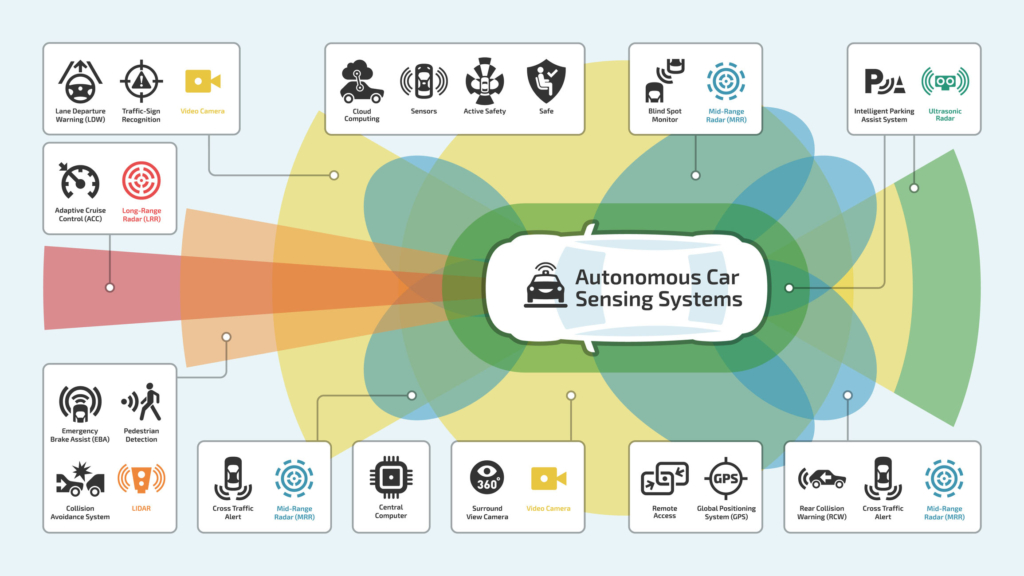
As you can see from the infographic above, a vast array of sensors collectively can work together to make a vehicle entirely or partially autonomous. Sensor autonomous vehicles first came to light with the Telsa Autopilot technology in 2014. The Autopilot technology used a series of vehicle sensor technology and connected vehicle technology to create a fully autonomous vehicle.
Artificial intelligence and its role
As mentioned earlier, most vehicles in the last five years rely on the driver being in control of the vehicle but assisted by advanced driver assist systems (ADAS) levels of autonomy. ADAS is categorised into levels based on autonomy, and there are five levels in total.
- Level 0: The ADAS system cannot control the car but only relay information to the driver.
- Levels 1 and 2: These are very similar where the driver does the decision making. The main difference is that level 1 can only control a single functionality, but level 2 can control multiple functionalities.
- Level 3-5: The amount of control a vehicle has increased from level 3 to 5. Level 5 is fully autonomous, where the vehicle driver has no input or control over the vehicle. A level 3 or 4 ADAS system could be the automatic parking of the vehicle.
The question asked now is, Does artificial intelligence address the needs of the fully autonomous vehicle? AI and machine learning are already becoming a part of modern life, but they cannot solely solve problems independently. Thinking about how autonomous vehicles work, they very much rely on the information surrounding their spatial awareness. The key for obtaining ADAS levels 3 to 5 will rely on the data it receives from vehicle detection sensors. In the future and already in place with some automobile companies concepts, autonomous vehicles will require enhanced spatial awareness, in-particular with harsh weather conditions and terrains. The enhanced awareness will require objects to be mapped closer together with an exact location for additional precision. This is where the importance of combining the suitable types of sensors makes the difference.
The importance of sensors
It ultimately comes down to sensors being the key driver in fully autonomous vehicles. If you think about how we as humans work, we have to use our sensors such as smell, sight, taste, touch, and hearing to navigate our way through the world. What happens when one of these senses gets impaired? Your body has to overcompensate to make up for the loss. For example, if you lose your hearing in one ear, your balance is affected.
Challenges
Car manufacturers have many challenges to deliver a fully autonomous vehicle, so we haven’t seen as much on our roads.
We know that autonomous vehicles ultimately rely on many sensors to give feedback to the control system. These sensors have to work in all types of conditions, and in some cases, extreme weather can play havoc with the readings.
The weather and other environmental factors such as heavy traffic, dirty road signs, and no road markings can negatively impact the accuracy of its sensing capability.
Most autonomous vehicles will use artificial intelligence and machine learning to process the data from the sensors. This will allow the vehicle to make the correct decision about its actions. Machine learning will use its algorithms to help identify objects and classify them, such as vehicles, pedestrians, street lights, street signs and more. The vehicle can then take actions such as steer, brake or swerving to avoid an object.
In the future, vehicles will be able to do this object detection and classification much more efficiently than we humans can and faster. At the moment, no basis ensures machine learning algorithms are safe.
There is no uniform agreement between standardisation bodies of car manufactures on how machine learning is trained, tested and validated.
The public and other road users are widely accepting the biggest challenge for autonomous vehicles. The public needs to be involved with the critical decisions of introducing autonomous vehicles. Without this, autonomous vehicle technology could be rejected.
The key for adoption will come through collaboration across the industry, which in some cases is very difficult. Most car manufacturers will design and build their autonomous vehicles the way they think it is best.
True collaboration through the vehicle standards agencies would accelerate the technology and provide much safer vehicles, assurance from the public and ultimately acceptance.
Summary
Autonomous vehicles are fast approaching, and significant automotive manufactures have already implemented some concepts and case studies. Manufacturing an autonomous vehicle is no doubt a challenging task. Every piece of the puzzle must fit for it to be a success and the critical piece is the sensor technology. Without reliable and accurate sensor technology, the vehicle cannot make the best decision for its actions and could be costly.
Recommended Products
Ambient Light Sensors, VCNL, Vishay

IR Photodiodes, PIN, Vishay
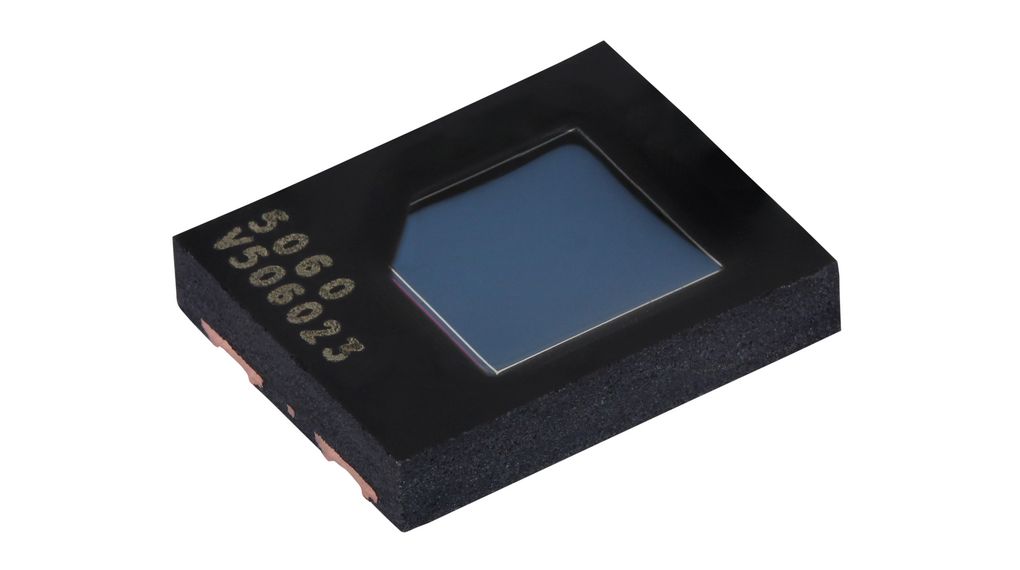
Ambient Light Sensors, VEM, Vishay
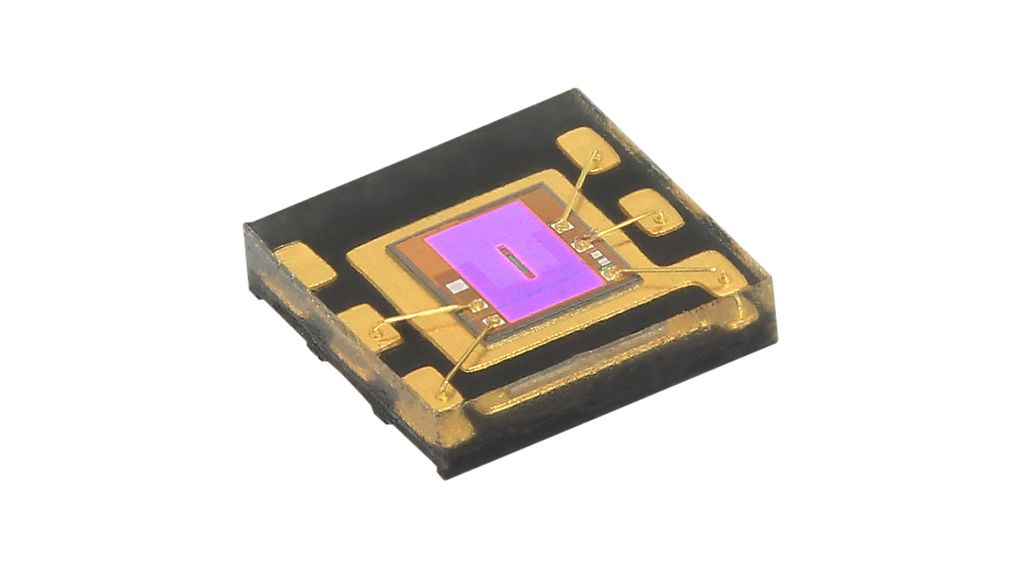
Infrared Emitters, 0805, SurfLight, Vishay
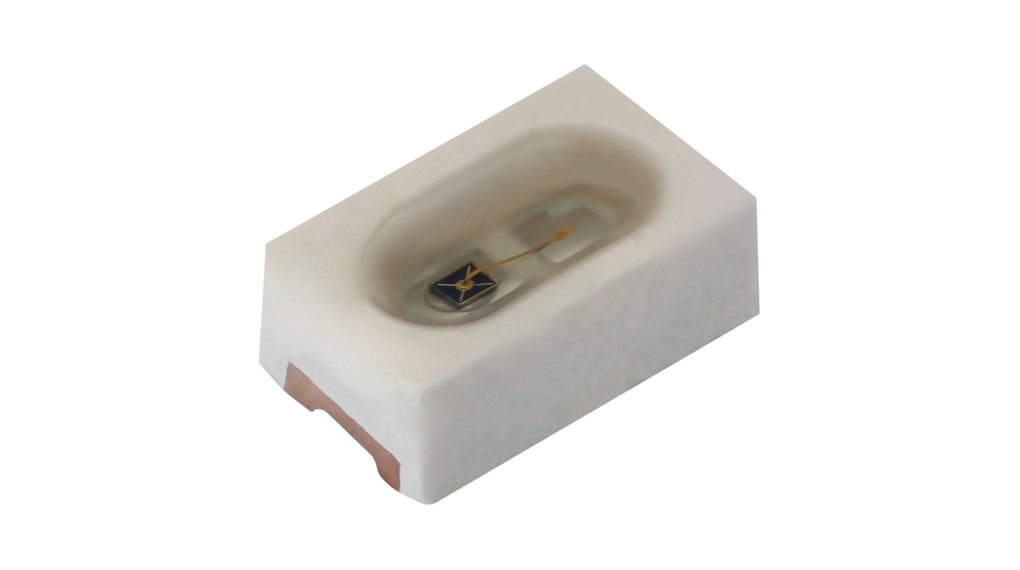
Phototransistor 850nm SMD, Vishay

Fork Light Barriers, TCPT, Vishay
